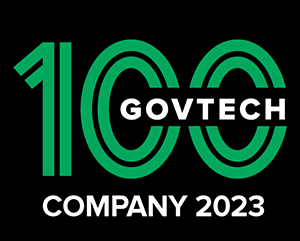How Local Governments Can Navigate the Current Hiring Shortage in Land Use
Posted on July 26, 2022
In speaking with thousands of Land Use Professionals over the past year, I have been stunned by how many agencies are short-staffed or struggling to hire. This challenge is impacting the efficiency of their operations, the morale of their staff, and ultimately the quality service they can provide to their citizens. But what is causing the overwhelming need for new hires? What is making it difficult for agencies to replace or hire for growth? What should your agency do about it?
While the onset of COVID 19 in March of 2020 marked the beginning of this current problem, there were already a set of underlying factors that placed local governments in a particularly vulnerable position. First, governments (around the world) were not equipped to quickly and effectively respond to the need for remote work. Much of the software that was integral to day-to-day operations was on-premise, or couldn’t be well-adapted to a virtual or online environment. Second, even once agencies were able to switch to remote work, much of the workforce was nearing retirement age and faced serious decisions about how to balance their work life, family life, and health. And for Development departments, record construction levels across the country became the icing on the cake.
As someone speaking to these agencies on a day-to-day basis, I couldn’t help but get the feeling that some of my prospects felt hopeless about how things were going and even worse about their prospects of hiring.
The Search for New Hires

Knowing I’d be going to a few conferences this spring, I made it my goal to learn as much as I could about why all these agencies kept telling me they couldn’t hire the people they needed. In speaking with folks from across the country, I kept hearing a very similar list of reasons: Years of experience required before getting a license, lack of flexibility in determining salary and hiring process, young people don’t want to live in rural or even suburban areas, lack of college encouragement and programs, etc…
The one thing that all of these factors have in common is they are out of the control of the municipality itself. Yet despite the historically low number of new applicants in the public land use industry, the number is non-zero. As an agency with almost no control over the total amount of applicants you have, all you can control is how likely that applicant is to pick you instead of a private sector job or another agency. What can you do to make your building, planning, or zoning department the one that people actually want to apply to and work in?
What Can Agencies Do?
Be Equipped for Remote Work
While at first remote work was a massive challenge, it is a blessing in disguise to agencies who are trying to attract a new younger workforce. Agencies that can offer seamless remote and hybrid options can hire from a larger geographic area, and are more attractive places to work. Now that remote work has become normalized, it is essential that you equip your department with the correct tools and systems to work remotely or at least hybrid. Providing this environment will be even more important for suburban and rural agencies, as this geographic flexibility has escalated to a “deal-breaking” factor in the decision-making process of young professionals and people with families.
Find Deal-Making Factors Through Innovative Technology
Second, ensure that your department has cloud-based and secure software that can enable this type of working environment. These types of technologies can include online application processes, email/chat-based communication, video inspections, and virtual help centers. There are three good principles to follow when selecting software.
- First, make sure whatever software you select will actually make your team more connected and more efficient.
- Second, make sure the software is easy for your staff and your customers to use. I’m sure you have felt the difference between software that is easy to navigate and software that isn’t.
- Third, make sure it is secure and cloud-based to ensure seamless remote access for all employees.
This technology will help you make your department shine, and will ultimately lead you to providing the highest possible level of service to the increasingly digital citizen. You will be able to increase productivity even as you deal with staffing challenges, while simultaneously making your department a more attractive place to work.
Bridging the Gap

Local government currently lags almost every other industry in technology adoption. The gap between the software citizens use daily and the software they interact with either as staff of government or citizens is widening at a rapid pace. Your typical entry-level applicant is very familiar with, if not dependent on software, and the software they know is there to make their lives easier. I would encourage any public land use officials reading this to first compare their software to other municipalities similar to them, and second compare how their software looks, feels and works compared to the non-government software they use on a daily basis. Does your software make it as easy as it should be to do your job? If not, migrate your workflows, processes, and day-to-day work into software that your citizens and staff actually enjoy using.
The good news is that taking serious steps towards becoming technologically advanced and remote-friendly won’t just help you hire better. Better technology and more efficient processes will give you more flexibility as you deal with short-term staffing challenges. Additionally, agencies can make their processes more transparent and consistent for the public online. Doing this can make it much easier and more productive for citizens to interact with your team, and help them leave your office smiling with permits and licenses in hand.
-Aidan Cyr, East Coast Sales

